
Biologists bluff the Environment Agency, sewage polluted the Artificial Lake
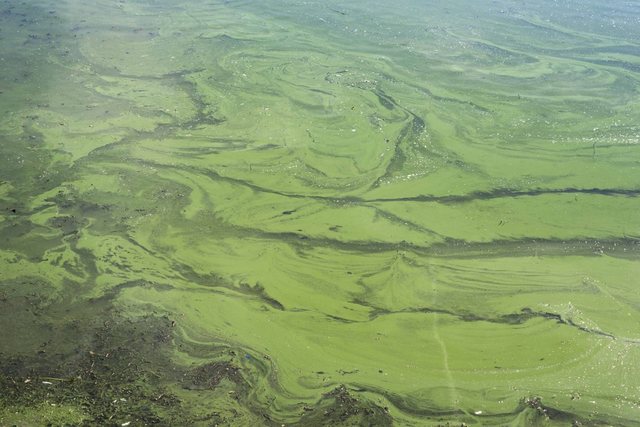
The thick layer of algae on a large part of the surface of Tirana's artificial lake is visible to the naked eye, while laboratory analyzes made by biologists of the University of Tirana say that what is seen with the naked eye is actually pollution of caused by the discharge of untreated urban wastewater into the lake.
Despite this, the National Environment Agency says that the analyzes carried out by it "do not reveal any problems".
"The analyzes that we did a few days ago did not show any signs of pollution" - said to BIRN on Wednesday the director of KTA, Arta Dollani, adding that "we are in the process of verification". However, Dollani did not respond to BIRN's request for a copy of the test results.
Unlike Dollani, biologist Aleko Miho from the University of Tirana says that the results of the analyzes carried out by KMA are contradictory and that their reliability is "disputable".
"From the two groups of analyzes carried out by KTA, all indicators are comparable between them, while for phosphorus there is a difference of 10x, and it is difficult to correctly judge the situation if both analyzes have this difference. This makes the reliability of this data questionable for a relatively small basin like this lake," says Miho's answer to the Parks and Recreation Agency, a municipal office that formally administers the lake as well.
The municipality of Tirana is understood to have been put into motion after the alarm given by Miho in a Facebook status on October 16, in which he said that laboratory analyzes carried out by Shpëtim Vata, a doctoral student, showed high contamination with cyanobacteria, which are created by the discharge of used and untreated urban water.
The discharge of sewage into the lake that forms the heart of the capital's only large park is actually a phenomenon that can be seen with the naked eye and that citizens who walk in this park feel in their noses regularly, especially on the south side. eastern, in which many palaces and villas have been built during the last decade, within the lake's catchment area. At least two water streams that should normally drain clean rainwater into the lake are visibly filled with sewage.
This situation, however, according to the National Environment Agency, does not turn out to be pollution, although the verifications continue.
According to biologists, "microcystis blooms often form during warm, calm weather in lakes and ponds with relatively high nutrient concentrations (nitrogen or phosphorus) or low nitrogen-to-phosphorus ratios."
However, KTA analyzes in one case indicate a high concentration of "phosphorus" and in another case a low concentration.
In the two groups of analyzes carried out by KTA, all indicators are comparable, while for phosphorus there is a difference of 10 times.
"According to the measurement at the Lake Dam, the value of P-PO4 is 0.055 mg/L, which means that the waters are very eutrophic; whereas according to the measurement at Moli HD, which is at the lake dam, maybe a few tens of meters away, the value of P-PO4 is 0.0055 mg/L, which means that the waters are deeply oligotrophic" - refers to the report on these analyses.
According to Professor Mihos, the first situation is more reliable, as it is proved by the blooming algae everywhere in the Lake. "Whereas the second value, in my opinion, must be wrong, perhaps a 'slip' by KTA, since as such the Tirana Watershed has hardly ever had an oligotrophic state, not only in this case, but throughout its lifetime of creation for over 60 years, due to the location, the climate of the area and the pressure of man around his pond" - he adds.
"This makes the reliability of this data questionable for a relatively small basin like this Lake" - concludes the report signed by Professor Miho.
When asked by BIRN, Miho described the data of KTA's analyzes as contradictory, while adding that the level of phosphorus is the main cause of the state of a lake and that algae is not a cause, but a consequence.
However, he adds that the raised concern is not intended to create panic among citizens, but to make the authorities responsible for the quality of water in the country aware, not only in the artificial lake, but in the river of Lana, Ishmi, etc...
Taulant Bino, head of the Association of Albanian Ornithologists (AOS), also wants a response from the institutions for the case and for a functional administration of the waters.
"The Great Park of the Artificial Lake of Tirana is under the administration of the Parks and Recreation Agency, but considering the human capacities as well as the functional duties of this institution, it is impossible to investigate the source of the pollution" - he told BIRN, suggested the adoption of an action plan for bioversity by the Municipality of Tirana.
According to Bino, an urgent cooperation with scientific researchers and the relevant water quality inspectorates is needed to understand the origin of the pollution and to control or eliminate it.
Albania is the last country on the European continent that pours used water directly into lakes or rivers, without first treating it to prevent pollution. A major project aimed at building a sewage treatment system for the capital area has remained unrealized with works already blocked for at least six years. The Government and the Municipality of Tirana have not given public explanations as to why the investment in question has not been realized. Reporter.al
Latest news




Vlora reserves a grand welcome for Sali Berisha
2025-05-03 20:38:35
Couples who sleep in different beds are happier, here's why
2025-05-03 20:20:24


Albanian tries to open plane door during Geneva-Pristina flight
2025-05-03 19:20:19


Noka meeting in Tirana: Vote for PD-ASHM, so that we repopulate Albania
2025-05-03 18:31:03


The mineral massif in Klos collapses, taking a quarry with it
2025-05-03 17:37:21
5 people injured in Laç, crime weapon found
2025-05-03 17:20:43

Two of the injured in Laç in serious condition
2025-05-03 16:40:30
Vučić cuts short US visit, hospitalized in Serbia
2025-05-03 16:22:30
DP-ASHM/Memelli Program: Feasible, economic dignity for every individual
2025-05-03 16:02:07


Details/ Shooting in Laç, names of 5 injured
2025-05-03 15:09:52

Gunfire in Laç, 4 people injured
2025-05-03 14:46:56
Clowns and journalists
2025-05-03 14:31:04



DW: German government rejects Rubio's accusation of
2025-05-03 13:14:49
Trump is protecting American Jews more than any Democrat leader
2025-05-03 13:03:09




The Kosovo Assembly is not constituted even in its tenth session
2025-05-03 11:24:01
Serbian President Cuts Off Visit to US, Vucic Reportedly Ill
2025-05-03 10:53:59
American tourist arrested for killing wife in Shkodra
2025-05-03 10:35:00
Saranda/ 48-year-old man robs store and attempts to rape saleswoman
2025-05-03 10:03:56
Albanian dies in motorcycle accident in Italy
2025-05-03 09:51:11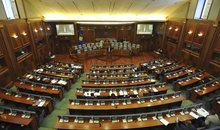
Will the impasse be broken today? MPs vote for the speaker after nine failures
2025-05-03 09:36:43

Tragic in Italy: 14-year-old Albanian girl jumps from window, dies in hospital
2025-05-03 09:03:04

Economic model, Albania is the European champion in construction
2025-05-03 08:49:07


Morning Post/ In 2 lines: What mattered yesterday in Albania
2025-05-03 08:07:46
The outraged immigrant tells Rama: You have become a national danger
2025-05-02 23:04:43
Kosovo opens embassy in Malaysia
2025-05-02 22:21:37





Analysis: Why is EU-Ukraine trade at risk of becoming less free?
2025-05-02 20:54:39


Refused asylum in Italy, 15 migrants sent to Gjadri camp
2025-05-02 20:30:04
Edi Rama's return to the (losing) 2011 campaign
2025-05-02 20:22:18
Moments of panic in Stuttgart/ Car "runs" into crowd of citizens
2025-05-02 20:02:06


Berisha: Rama travels twice as much as the US president
2025-05-02 19:00:58

Phoebe Gates accidentally reveals that Bill Gates has Asperger's syndrome
2025-05-02 18:45:02

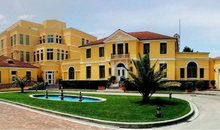
US against "birth tourism": Parents who abuse tourist visas risk entry ban
2025-05-02 18:09:59

Elona Lalaj appointed General Director of Tirana Municipal Police
2025-05-02 17:33:39
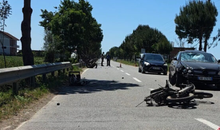


Nallbati challenges SP opponents to a public debate in the center of Devoll
2025-05-02 16:53:26
The US withdraws from peace negotiations between Ukraine and Russia.
2025-05-02 16:42:13
Zodiac signs that always know when you're lying to them
2025-05-02 16:27:17


Trump makes changes to his inner circle
2025-05-02 15:56:38
Fire in an apartment on "Tish Daija" street in Tirana
2025-05-02 15:41:27

Who can stop the price increase?
2025-05-02 15:08:52


Trump makes changes to his inner circle
2025-05-02 14:34:04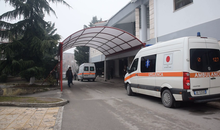
Theft at Korça hospital, nurse and patient robbed
2025-05-02 14:33:14
Hotolisht residents warn Rama-Balluk: Either us or you
2025-05-02 14:21:58
May 11th Elections, US Embassy in Tirana distributes JD Vance's message
2025-05-02 14:07:14
Germany declares AfD party an extremist group
2025-05-02 13:59:52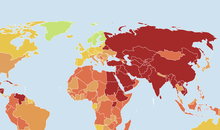

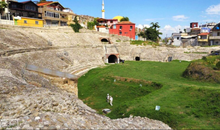

Begaj hosts King Abdullah II of Jordan with a state ceremony
2025-05-02 13:10:20

Italian MP: Vote for a great man like Berisha to change your destiny
2025-05-02 12:53:19
Florenc Çapja extradited from Dubai today
2025-05-02 12:39:21
Berisha: Every village will have the infrastructure of city neighborhoods
2025-05-02 12:30:53


